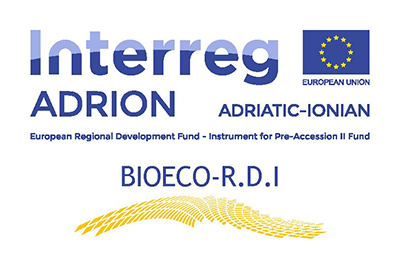
Long Term Recommendations
As described under chapter 3, the region has high biomass potential but in majority of region low utilization of it. The benefits of using biomass for the needs of bio-economy in the region are much lower than they could have been. At the moment its use in terms of bioeconomy is still largely at the level of processing/turning it into energy and heat. As much is this one way of turning the waste biomass into something useful, it is on the other hand not its optimal use. The economies in the region should strive for solutions that would through the cascading use of the mentioned biomass provide products with higher added value (materials and chemicals for use in chemical, automotive, construction, pharmaceutical industry, etc.), and only ultimately use it for energy. But for this to realize the infrastructure such as bio refineries and knowledge is needed. Another very important for the successful operation of biorefinery is the constant supply of biomass and the proximity of biomass source to the bio plant, since the transport of it can at the end cause higher costs and environment pressure than the outcome itself. At the moment there are no large scale bio refineries present in the project region.
For the optimum functioning of a major refinery a large investment is needed and the continuous flow of large quantities of biomass is needed. This is a great bite for a region where there is a large amount of biomass, which is seasonal in character and locally fragmented, while economic infrastructure consists predominantly of small and medium-sized enterprises with lower investment potential. Therefore the region should consider going in the direction of building smaller, local bio refineries that would help close local loops.
The gap between the research and industry is highly present and the transfer of research results to industrial level and further on to market is poor. The large part of region still did not recognize the benefits of bioeconomy and consequently the market is undeveloped and the demand for bioeconomy products is low. All this lowers the interest of industry to invest into bioeconomy products. However the situation is slightly different in Umbria where the presence of industrial giants and bioclusters paths the way to a successful cooperation between biopolymer industry, research and biomass productive sector.
The large industrial giants such as present in Umbria are not very much present in other parts of the region. Therefore, it will be difficult to achieve economies of scale that would give local industry a reasonable incentive to invest in bio-economy. Therefore one of the possible directions could be small scale/high added value/high knowledge content route to bioeconomy, backed by cross regional connections and networks, which is likely to be more successful in these settings. This route builds on an active and high qualified R&D sector, rather than on traditional, high investment industry.
Another very important element for the deployment of bioeconomy in the region is the political framework and will. Majority of countries within the region lack both.
Last but not least, consumers represent a major factor in creating a market for bio-products. There is a considerable lack of knowledge about the benefits of bio-based materials in the region compared to classical, and, above all, a lack of awareness of the positive impact bio-economy can have on public health, the environment and the future.
Based on the information and data provided by international work group members the following main critical elements were identified for the ADRION region:
- Underdeveloped market for bioeconomy products and lack of market demand
- Unrecognized potential of bieconomy among enterpreneurs
- Insufficient or rather lack of active participation and investments of entrepreneurs in the development of bioconomy products
- Insufficient recognition of bioeconomy at policy level, lack of policy support and policy commitment
- Lack of consistent long-term strategic support to transition of traditional industries towards bio-economy
- Lack of organizations for linking (clusters)
- Lack of cooperation between research organizations and industry
Recommendations for improvement of bieoconomy deployment in the region:
- Raising the level of knowledge and understanding of the principles of bio-economy, circular economy and sustainable development.
- Streamline the exchange of good practices across the region
- Facilitate awareness raising, best practices and capacity building activities- policy debates for changing or moderating the existing legislation which will also help connecting economic and environmental goals; good practise cases from regions (study visits)
- Enable technical assistance for exploiting the available biomass
- Strengthening the support environment and designing measures in the field of bioeconomy and Circular economy
- Improving cooperation between RO and Industry by establishing operating systems for enabling better overview and coordination of what is done at RO and what industry needs wide platforms for providing and extending knowledge about current existing technology, processes, information about suppliers of biomass, opportunities for cross-sectoral collaboration and innovation should be developed. These could be central points of contact that can provide adequate knowledge on existing national and international initiatives for bioeconomy throughout the ADRION region. These platforms should be developed by interested SME and academia and supported by a political framework
- Enhance the cooperation between science and business, especially the applied research for concrete products, processes or services, specialized tools need to be developed for streamlined research projects in the field of bio based products and materials (Innovation vouchers, contracted research and rewarding professional performance of R&D institutions could potentially increase the output of joint projects)
- Funding schemes for SME’s for new products/materials from biomass that can substitute fossil-based equivalent
 Go to the Bioeco R.D.I. website
Go to the Bioeco R.D.I. website


